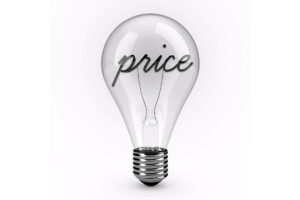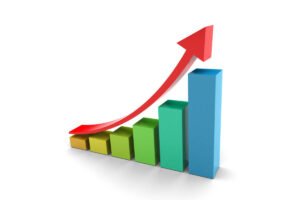Determine the Optimal Pricing for Your House to Entice a Greater Quantity of Prospective Home Buyers
Determine the Optimal Pricing for Your House to Entice a Greater Quantity of Prospective Home Buyers
Pricing a house is both an art and a science. Determining the optimal price for your property is essential to entice more prospective home buyers and achieve a faster sale. This comprehensive guide will explore the critical factors to consider when setting the price for your house and provide real-life examples to help you better understand the concept of optimal pricing.
Importance of Optimal Pricing
Pricing your house too high or too low can result in fewer interested buyers or leave money on the table. An optimally priced home can lead to more buyer inquiries, increased competition, and a quicker sale at a favorable price.
Example 1: John listed his house at $500,000, 10% above the market value. The house stayed on the market for several months, and he eventually had to lower the price. Had John priced his home correctly, he might have attracted more buyers and sold his home faster.
Understanding Market Trends and Your Local Area
 To set the optimal price, you need to understand the current market trends and the specifics of your local area. Analyze the recent sales of similar properties (comparables or “comps”) and observe the average days on the market. Look at the list-to-sale price ratio and the current inventory of houses for sale.
To set the optimal price, you need to understand the current market trends and the specifics of your local area. Analyze the recent sales of similar properties (comparables or “comps”) and observe the average days on the market. Look at the list-to-sale price ratio and the current inventory of houses for sale.
Example 2: Sarah lives in a neighborhood with high demand and low inventory. She can afford to price her house slightly above the market value, as buyers will likely compete and potentially drive up the price.
Factors Affecting Property Value
Several factors affect a property’s value, including its size, age, condition, location, and unique features. It is crucial to consider these factors when comparing your house to the comps.
Example 3: Tom’s house is similar in size and age to others in his neighborhood but has a newly renovated kitchen and a beautiful backyard. Due to these unique features, Tom can justify a higher price for his home.
Pricing Strategies
There are several pricing strategies you can use to attract more buyers:
a. Value-Based Pricing
It is pricing your house according to its actual value and market conditions. This strategy ensures a fair price and attracts serious buyers.
Example 4: Based on recent comps and market trends, Jane’s house is worth $400,000. She decides to list it at the same price, which results in multiple offers and a quick sale.
b. Psychological Pricing
I am using pricing tactics like setting the price slightly below a round number, e.g., $299,900 instead of $300,000. This strategy appeals to buyers’ emotions and can make the property appear more affordable.
Example 5: Mike lists his house at $349,900 instead of $350,000. The psychological pricing strategy results in more buyer inquiries and faster sales.
c. Competitive Pricing
You are pricing your house lower than similar properties, attracting more buyers and potentially creating a bidding war.
Example 6: Karen lists her house at $375,000, while other comparable properties are listed at $400,000. The competitive pricing strategy attracts multiple buyers, and her house sells for $410,000 after a bidding war.
Working with a Real Estate Agent
A real estate agent can provide valuable insights and guidance on pricing your house. They have access to detailed market data and can help you make an informed decision based on the current market trends and property specifics.
Example 7: Tim hires a real estate agent to help him price his house. The agent conducts a comparative market analysis and recommends a listing price of $450,000. Tim follows the agent’s advice, and his home sells quickly at the suggested price.
Benefits of Working with a Real Estate Agent
a. Expertise
 Real estate agents have the knowledge and experience to provide accurate pricing recommendations based on local market conditions and property specifics. They can help you avoid common pitfalls and ensure your house is priced optimally.
Real estate agents have the knowledge and experience to provide accurate pricing recommendations based on local market conditions and property specifics. They can help you avoid common pitfalls and ensure your house is priced optimally.
Example 8: Susan hires a real estate agent who advises her to list her house at $525,000 based on recent comps and market trends. Susan follows the agent’s advice, and her home sells within a month, close to the asking price.
b. Comparative Market Analysis
Real estate agents can conduct a detailed comparative market analysis (CMA) to determine the optimal price for your house. This analysis considers recent sales of comparable properties, current market trends, and your house’s unique features.
Example 9: Paul’s real estate agent prepares a CMA that reveals similar houses in his neighborhood have sold for an average of $475,000. Given its recent upgrades, the agent advises Paul to list his home at $480,000. Paul follows the agent’s advice and receives multiple offers, selling his home for $485,000.
c. Marketing and Exposure
Real estate agents can help market your property, ensuring it reaches a larger audience of potential buyers. They can leverage their professional network, use online marketing tools, and host open houses to increase your house’s visibility.
Example 10: Emily’s real estate agent creates a professional listing for her house, complete with high-quality photos and a virtual tour. The agent shares the listing on social media, real estate websites, and within their network, resulting in more buyer inquiries.
d. Negotiation Skills
Real estate agents are skilled negotiators who can help you get the best price for your house. They can handle multiple offers and counteroffers and advise you on the best action.
Example 11: Jack receives two offers on his house. His real estate agent advises him to counter the higher offer with a slightly increased price and a quicker closing date. The buyer accepts the counteroffer, and Jack sells his house at a favorable price.
Regularly Review and Adjust the Price
The real estate market is dynamic, and conditions can change rapidly. It is essential to review your pricing strategy regularly and make adjustments if necessary. If your house isn’t attracting enough interest or receiving offers, consider lowering the price or improving it to increase its appeal.
Example 12: Laura’s house has been on the market for two months without any offers. She decided to lower the price by 5% and made minor improvements, such as repainting the walls and decluttering the rooms. Shortly after the adjustments, Laura received multiple offers and sold her house.
Conclusion
Determining the optimal pricing for your house is crucial to entice a greater quantity of prospective home buyers and ensure a successful sale. By understanding market trends, considering the factors affecting property value, employing strategic pricing techniques, and working with a real estate agent, you can maximize your chances of selling your house quickly and at a favorable price. Remember to stay flexible and adjust your pricing strategy to keep up with the ever-changing real estate market.
To learn more details, let’s talk with Amar REALTOR®
Let’s schedule a meeting to review all your Real Estate goals!
![]()
Please Click to schedule a time on my online calendar at no cost!
https://www.amarrealtor.com/meetingwithamarrealtor/
Contact Amar REALTOR® today for more information about Buying/Selling a Home in the Bay Area!
Amar REALTOR® offers expert real estate services with proven results in the Bay Area Housing Market, including Homes for sale in Santa Clara County, San Mateo County, Contra Costa County, and Alameda County.
More Interesting Information about Bay-Area Real Estate
Bank-owned property or real estate-owned (REO)
What You Need to Know About Buying a Foreclosure Home
How the Federal Reserve Affects Mortgage Rates
Should You Choose an Adjustable Rate or a Fixed Mortgage?
How to Buy and Sell Simultaneously
